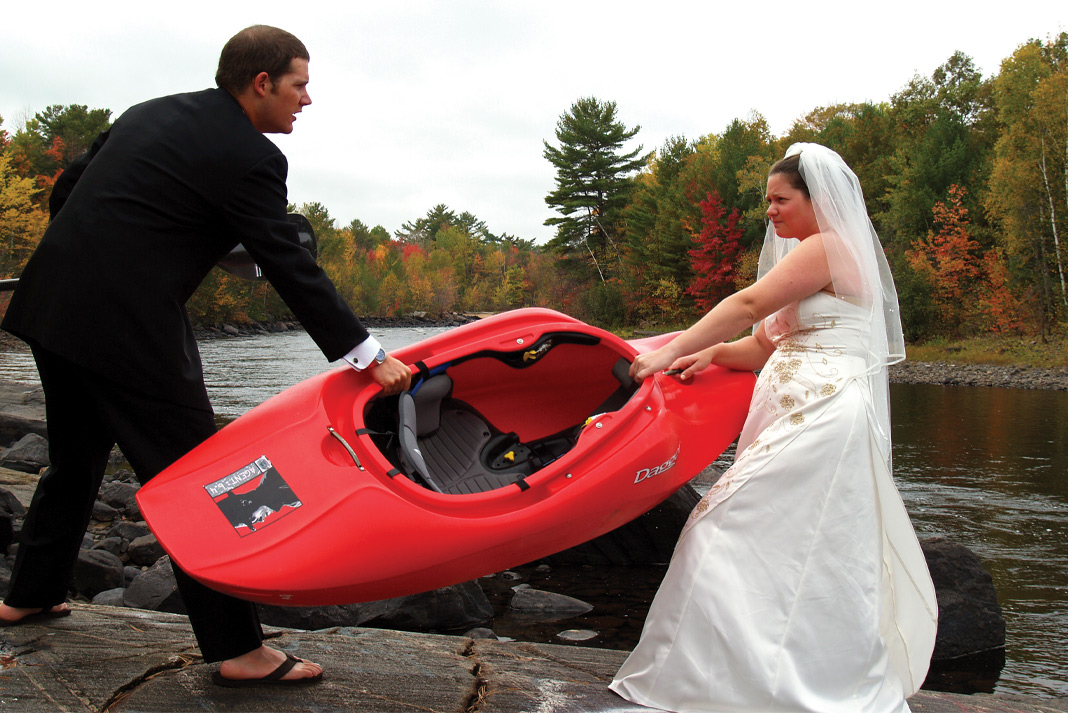
You know you’re living with a gear disorder when you exhibit one or more of the following traits: You feel you cannot face life without your gear; you cannot control your use of gear; you are proud of excessive use of gear, despite harm to your health and other parts of your life; you lie about your use, especially about how much you are using it; you give up friends, family and activities you once enjoyed; you cannot recognize the problems with your behavior.
These are signs of the sixth stage of a gear addiction. Sound familiar?
Most people develop gear disorders of all kinds before reaching adulthood. The alpine ski trade associations know if children are riding chairlifts by the age of 11, they contribute exponentially more to the ski gear industry’s bottom line throughout their lifetimes. This is why grade five students ski for free at most resorts across the country. Hey kids, want some candy?
Other outdoor industry studies suggest the same, and anecdotally we know this to be true for paddling.
Stage one of a gear use disorder, the initiation stage, generally happens during the reckless teen and college years—mostly out of curiosity and because friends and family are doing it. This is a great time for creating lifelong addictions of all kinds. The prefrontal cortex part of the brain, responsible for decision making and controlling impulses, has not fully developed. This makes 40-foot waterfalls and $1,000 drysuits seem totally reasonable. Why not, right?
Stage two is the experimentation stage. Gear use in this second stage is a social activity associated with fun, unwinding and a general lack of consequences. You are fleetingly aware of the risks but think to yourself, I can stop using my gear if I want to. You think, my gear doesn’t control me, I control my gear. Delusion begins here.
During stage three, gear use becomes more frequent. You may not be able to use it every day, but patterns develop, like say, using gear every weekend. At stage three, you may begin to miss work or school. Gear use becomes an excuse to miss family functions like weddings, or gear is worn to weddings when an opportunity for use exists before or afterward. In advanced cases, you might wear it to your own wedding. You may already have your local gear dealer on speed dial. And gear use has become intricately tied to escaping negative emotions or unpleasant situations.
Gear addiction, say some, becomes a real problem at stage four when you begin to change your circle of friends. Here your behavior almost certainly changes, becoming noticeably more chill, often late for appointments and more likely to be naked in public places before and after use.
Stage five dependence leads to the serious gear use disorder of full-on stage six addiction, see above.
As the editor-in-chief of paddling’s largest gear guide, I say heavy gear use is not a disorder at all, but it’s the activities of kayaking, paddleboarding, kayak fishing and canoeing we are addicted to.
But I would say that, wouldn’t I?
No matter, if you are reading this, it’s probably too late to regain control over your life and your bank account. Sorry, not sorry. You’ve surely already been through the endless pages of the best paddling gear in the Paddling Buyer’s Guide.
With other addictions, stage seven is treatment. Treatment would be to stop doing it. Professionals would recommend an initial cold turkey detox period followed by intense behavioral therapy and some expensive pharmaceuticals.
Gear addition, the way I see it, is only a problem when you’re not using. For which there are therapy sessions and groups we can attend. In the cold winter regions, addicts flock to warm community pools for help. When the water is not stiff, such groups gather on lakes and rivers everywhere. Check your national paddling association or local club for regularly scheduled meetings.
Scott MacGregor is the founder and publisher of Paddling Magazine.
Successful interventions can help an addict’s loved ones express their feelings constructively. Featured photo: Dan Caldwell